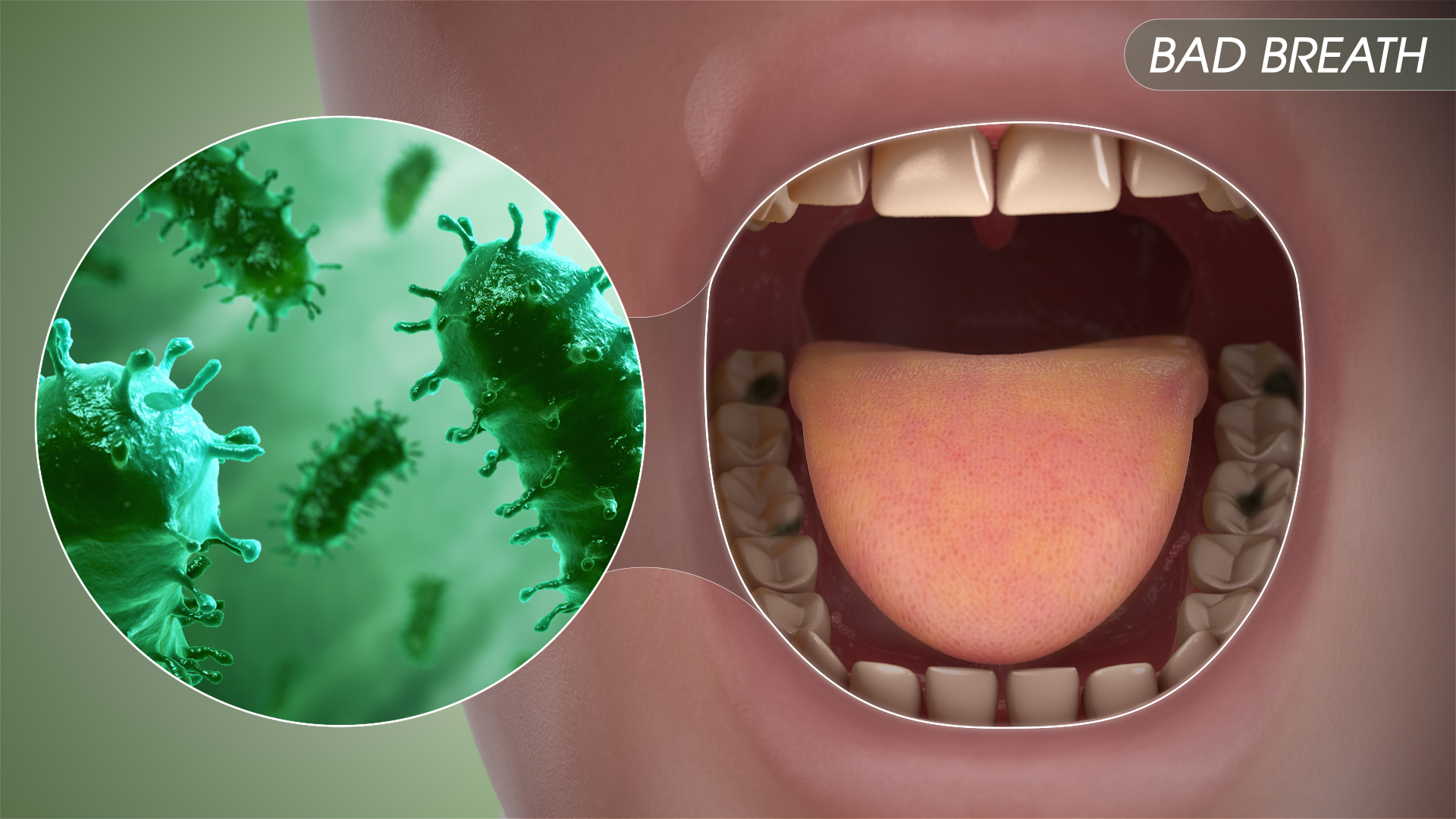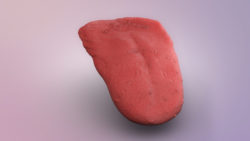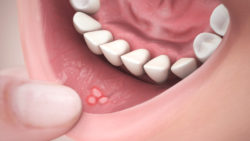Halitosis is the medical name for bad breath. Halitosis may be the result of poor dental habits or could be a symptom of other underlying health issues. It causes embarrassment, anxiety and worry. Bad breath is made worse by eating certain foods and other unhealthy lifestyle habits. Bad breath affects 1 out of 4 people globally.

Symptoms
Bad breath odors vary depending on the underlying cause. It is difficult to assess one’s own bad breath, so it is better to ask a family member or friend to assess. Some people have no bad breath but they are very concerned and their obsessive mouth cleansing behaviour leads to halitophobia.
Causes
Bad breath starts in the mouth. Some of the key causes of bad breath are listed below:
- Poor dental hygiene: Not brushing and flossing regularly causes plaque to build up on the teeth and develops into periodontitis. Periodontitis causes bad breath. Even dentures that are not cleaned properly can get bacteria that cause halitosi.
- Food: When food particles break down in and around the teeth, they cause odors. Onions and garlic are types of food that even after digestion can cause bad breath.
- Tobacco products: Consumption of tobacco products cause bad breath. Tobacco products also give rise to gum disease, which also give rise to bad breath.
- Dry mouth: The saliva cleans the mouth naturally. It neutralises the acid produced by plaque and washes away the dead cells that accumulate in the cheeks, gums and on the tongue. Dry mouth or xerostomia is a condition in which the saliva does not get produced and hence bad breath is a symptom.
- Medications: Certain medicines cause dry mouth and cause bad breath, while others break down in the body and release chemicals that cause bad breath.
- Infections: Infections in the mouth such as tooth decay, mouth sores and gum disease can cause bad breath.
- Diseases: Certain diseases and illnesses such as pneumonia, bronchitis, postnasal drip, sinus infections, diabetes, acid reflux, and kidney and liver problems may also cause halitosis.
Treatment
Treatment of bad breath requires regular visits to the dentist. Treatment will depend on the cause. If it is related to teeth and gum disease then the dental measures may be prescribed to treat the gum disease and better oral hygiene will have to be practised. However, if the bad breath is due to other underlying illnesses, then the illness has to be identified and treated accordingly.
Halitosis or bad breath may be easily reduced or prevented if we brush our teeth at least twice a day, floss regularly, replace toothbrushes every 2 to 3 months, rinse our mouth with an antibacterial mouthwash, visit the dentist regularly, stop smoking and using tobacco in other forms, and drink lots of water.
Disclaimer: The information in no way constitutes, or should be construed as medical advice. Nor is the above article an endorsement of any research findings discussed in the article an endorsement for any of the source publications.
Sources-
- https://www.colgate.com/en-in/oral-health/conditions/bad-breath?gclid=CjwKCAjw8-LnBRAyEiwA6eUMGnf_W-0yAJt1i3sBcDEJHWI9mgvIlCtw9AK2ryomyQUxy0Awf9RyjhoC940QAvD_BwE
- https://www.mayoclinic.org/diseases-conditions/bad-breath/diagnosis-treatment/drc-20350925
- https://www.webmd.com/oral-health/guide/bad-breath#2
- https://www.medicalnewstoday.com/articles/166636.php
The tongue is the only muscle which isn't joint to the bone at both ends, and it is quite uncommon in that aspect. It is connected to the hyoid bone on one end, which is unique too, as it is the only bone which is not joint to another bone in the human body.
Read More..
Canker sores are small, shallow ulcers in the mouth. They are the most common type of mouth ulcers. Canker sores are not contagious but are painful and make talking and eating uncomfortable. They are either white or yellow, surrounded by red, inflamed tissue.
Read More..











